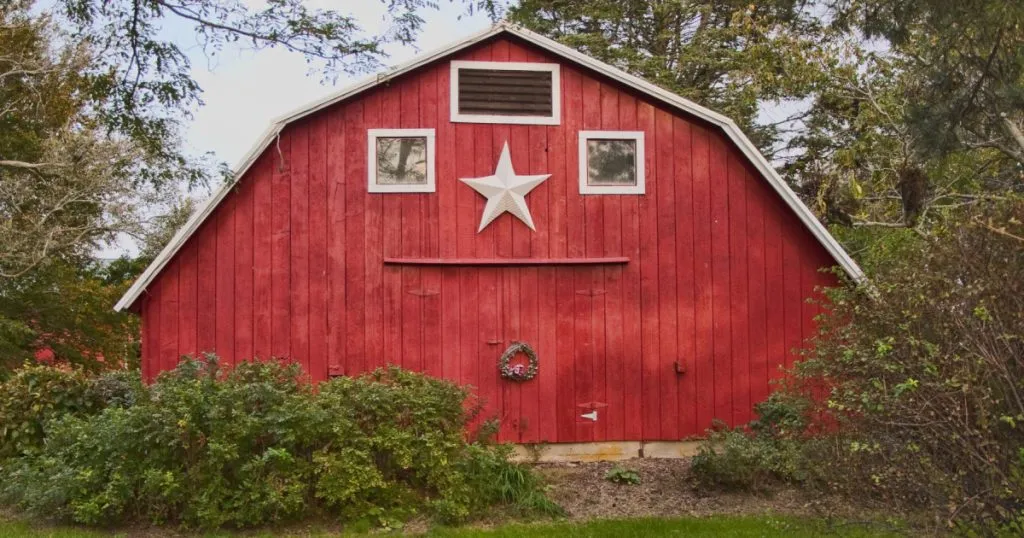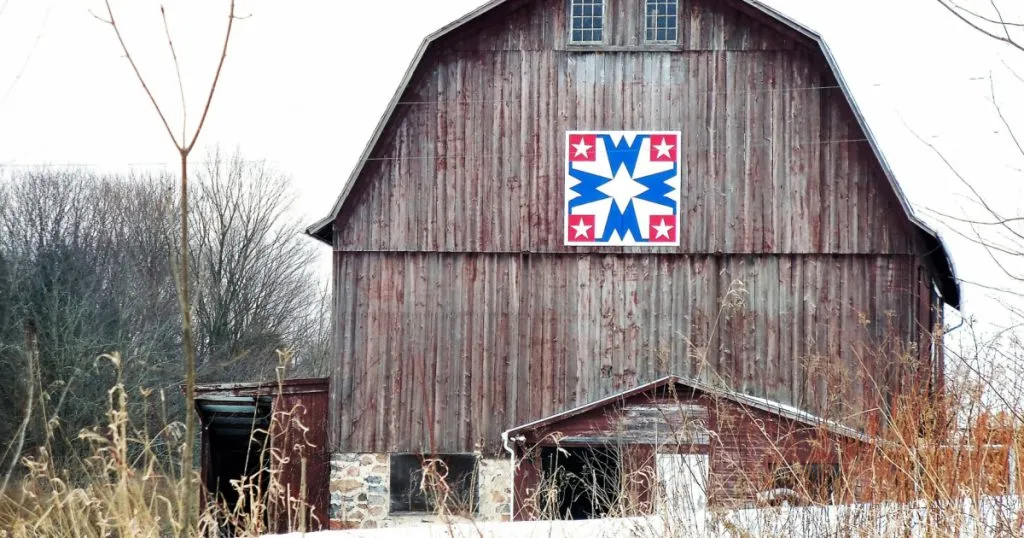Unlocking the Symbolism of Barn Stars
Barn stars, those charming ornaments often found adorning the highest point of a barn’s entrance, whether painted or crafted from metal, have a unique role. In some cases, hex signs or quilt squares are used as alternatives, adding an unexpected layer of complexity to these decorations.
Surprisingly, German-American farmers attach great importance to barn stars. They place these stars atop barns to ward off evil or usher in prosperity for their crops. What’s truly fascinating is that each barn star bears a distinct meaning, often associated with its color.

For example, a green barn star symbolizes the fertility of crops and robust growth, while blue or black stars signal protection for the farmer, their household, and their crops. Brown, on the other hand, represents friendship. This rich history of barn stars unfolds in a captivating manner.
The appearance of barn stars on barns can be traced back to the 1830s, with its influence deepening within the Pennsylvania Dutch or Amish communities. Each emblem finds its roots in European German folk art, transplanted to a setting removed from popular culture and modern technology, in line with the Amish’s simple way of life.
Barn stars are just one facet of a vast tapestry of regional traditions and customs passed down through generations. What’s more intriguing is that within Pennsylvania Dutch traditions, things often associated with one another have distinct meanings.
Patrick Donmoyer, the custodian of the Pennsylvania German Cultural Heritage Centre at Kutztown University, emphasizes the existence of two parallel traditions: “There are the barn stars, and then there are the hex signs.”
Barn stars have also served as symbols of protection. Hex signs, visually similar but conceptually distinct, were found in various places, from marriage licenses to grave markers, offering protection and good fortune. Surprisingly, barn stars didn’t always bear the supernatural significance they hold today.

According to Donmoyer, “These were part of the agricultural lifestyle. They were something that was not necessarily connected to supernatural events or ideas.” Hex signs, on the other hand, didn’t emerge until nearly a century after barn stars.
These two traditions diverge in an unexpected way. In 1924, a New England artist named Wallace Nutting visited Pennsylvania Dutch Country and “misinterpreted” the original quilt squares and barn stars to create the hex signs.
Donmoyer explains, “He was describing something real, but what he was describing was misunderstood. It was not the stars on the barn that he was describing, it was actually this idea of the hexenfoos. He kind of transposed the two aspects of the tradition.”
By the 1950s, these designs had evolved and become a popular tourist attraction. The appearance of barn stars and quilt squares on barns throughout Pennsylvania Dutch country serves as a testament to the ingenuity, labor, and customs of a culture that has long intrigued mainstream society.

These symbols convey culture and traditions passed down from one generation to the next. So, despite the common belief that barn stars ward off evil, they primarily serve as a decorative remembrance of the forefathers and native place for the Pennsylvania Dutch.
Across diverse cultures and nations, superstitions have been prevalent for centuries. These traditions aim to ward off evil, evade negative karma, and often invite prosperity and happiness. It’s no surprise that many tribes and nations have their own ancient symbols that, like barn stars, have been adapted to ward off evil and safeguard homes and families.

For instance:
– Om, frequently used for protection during meditation and spiritual practices, believed to purify both body and mind, harmonizing tranquility and life’s challenges.

– The Egyptian Eye of Horus, found in ancient Egyptian art and jewelry, offers protection and healing.

– The Hamsa Hand, popular in the Middle East and the Mediterranean, is thought to ward against evil, bringing good health, luck, and wealth.
– The turtle, revered by Native American and African tribes, symbolizes longevity, wisdom, fertility, and being grounded.

– The Norse Helm of Awe is believed to shield warriors in combat and strike fear into their adversaries.

Although people from different nations have been separated, technological advancements have made it easier to recognize the similarities in the symbols used by various cultures, each with its own name and meaning. Nevertheless, these symbols all promise safety, wealth, and good health, serving as a reminder of our ancestors’ hopes for the future prosperity of our families and communities. The intricate history of barn stars is a tale of beautiful, simple designs. For more ideas and instructions, watch the video.”



